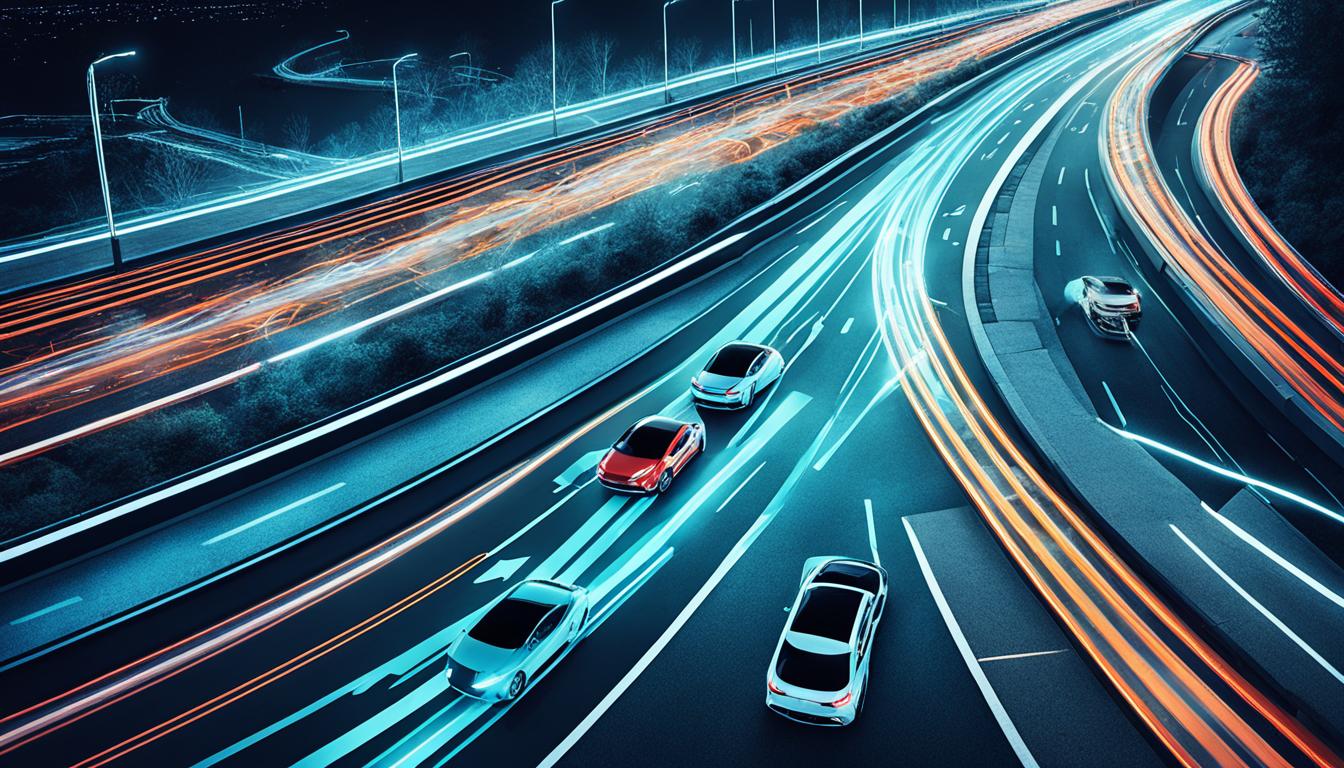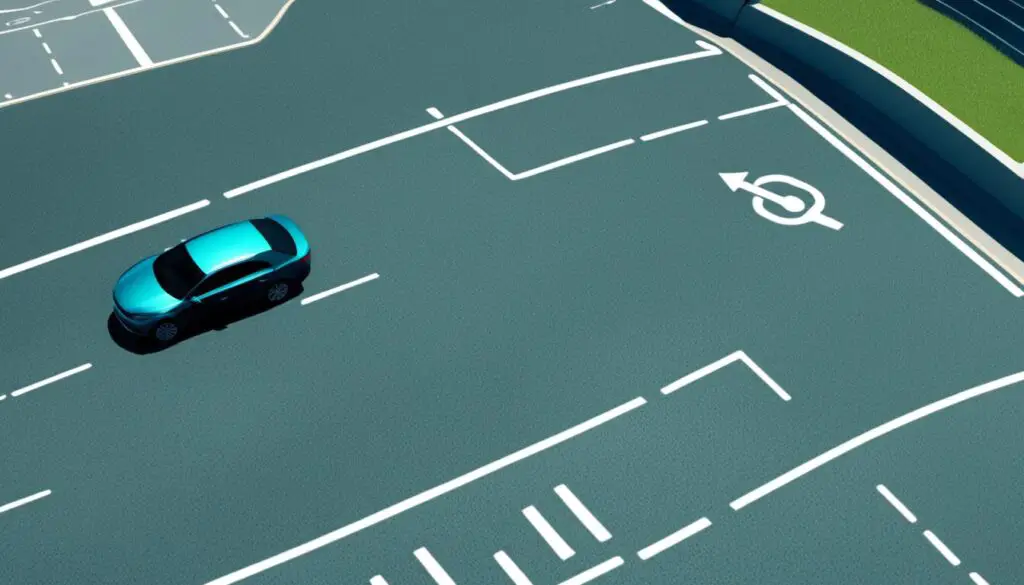
Revolutionary Vehicle-to-Vehicle Communication: What It Means for You
Vehicle-to-vehicle communication is a revolutionary technology that is transforming driving safety and efficiency. With this cutting-edge system, vehicles can communicate with each other, sharing crucial information such as speed, location, and direction. This real-time exchange of data allows cars to anticipate and react to potential hazards on the road, reducing the risk of accidents and improving overall traffic flow.
Imagine driving on the highway, and your car notifies you of a vehicle up ahead suddenly braking. With vehicle-to-vehicle communication, you can stay ahead of potential dangers and take necessary precautions, ensuring a safer and more seamless driving experience.
Integrating this technology into our vehicles has the potential to revolutionize the way we drive, making our roads safer and more efficient. Let’s explore how vehicle-to-vehicle communication works and the benefits it brings to both drivers and society.
Key Takeaways:
- Vehicle-to-vehicle communication enables vehicles to share real-time information, improving driving safety.
- With this technology, drivers can anticipate and react to potential hazards on the road, reducing the risk of accidents.
- Vehicle-to-vehicle communication has the potential to optimize traffic flow and reduce congestion, leading to shorter travel times and reduced fuel consumption.
- As this technology evolves, we can expect significant advancements in the field of transportation, making our roads safer and more efficient.
How Vehicle-to-Vehicle Communication Works
Vehicle-to-vehicle communication relies on advanced wireless communication technology to enable vehicles to exchange data. Each vehicle is equipped with sensors, GPS, and communication modules that allow it to transmit and receive information from nearby vehicles. This data exchange happens in real-time, creating a network of connected vehicles that can communicate and collaborate to improve safety on the road.
This wireless communication technology enables vehicles to share vital information such as speed, location, and direction. By exchanging this data, vehicles can anticipate and react to potential hazards, reducing the risk of accidents and improving overall traffic flow. This real-time exchange of information is the foundation of vehicle-to-vehicle communication and its numerous safety applications.
Vehicle-to-vehicle communication is particularly effective in safety applications such as collision avoidance and emergency warning systems. Using wireless technology, vehicles can alert drivers to potential dangers and help them take precautionary measures. For example, if a vehicle ahead suddenly brakes, it can send a warning signal to nearby vehicles, alerting them to slow down and giving drivers ample time to react.
By creating a network of connected vehicles, wireless vehicle-to-vehicle communication has the potential to revolutionize driving safety and efficiency. It enables vehicles to collaborate and share vital information, making our roads safer for everyone.
Benefits and Implications of Vehicle-to-Vehicle Communication:
Implementing vehicle-to-vehicle communication offers numerous benefits for both drivers and society as a whole. By providing real-time information about potential hazards, this technology greatly enhances driving safety. Drivers can proactively avoid accidents by receiving alerts about sudden braking, lane changes, or approaching emergency vehicles. This reduces the risk of collisions and promotes safer driving practices.
Furthermore, vehicle-to-vehicle communication improves traffic efficiency by reducing congestion and optimizing traffic flow. Vehicles can communicate with each other to coordinate movements and avoid unnecessary delays on the road. This leads to shorter travel times, reduced fuel consumption, and a more seamless driving experience.
To summarize, vehicle-to-vehicle communication plays a vital role in shaping the future of transportation. By leveraging wireless communication technology, it enables vehicles to exchange data and collaborate to improve safety and efficiency on the road.

| Benefits of Vehicle-to-Vehicle Communication | Implications of Vehicle-to-Vehicle Communication |
|---|---|
| Improved driving safety through real-time hazard alerts | Reduced risk of accidents and collisions |
| Enhanced traffic efficiency and reduced congestion | Shorter travel times and reduced fuel consumption |
| Collaborative environment for vehicles to communicate and share information | Promotion of safer driving practices and behaviors |
Benefits and Implications of Vehicle-to-Vehicle Communication
The implementation of vehicle-to-vehicle communication has significant benefits for both drivers and society as a whole. By enabling vehicles to communicate with each other, this revolutionary technology enhances driving safety by providing real-time information about potential hazards, such as sudden braking or approaching emergency vehicles. This allows drivers to avoid accidents and make more informed decisions on the road, improving overall driving safety.
Moreover, vehicle-to-vehicle communication holds the potential to greatly improve traffic efficiency. By reducing congestion and optimizing traffic flow, this technology has the power to shorten travel times and reduce fuel consumption. With vehicles interconnected and communicating with one another, traffic jams can become a thing of the past, leading to smoother and less stressful journeys for everyone on the road.
To illustrate the benefits of vehicle-to-vehicle communication, consider the following table:
| Benefits | Implications |
|---|---|
| Enhanced driving safety | Reduced accidents and improved decision-making on the road |
| Traffic efficiency | Shorter travel times and reduced fuel consumption |
As shown in the table, vehicle-to-vehicle communication offers tangible advantages in terms of driving safety and traffic efficiency. By reducing accidents and congestion, this technology has the potential to transform our roads, making them safer and more efficient for all.
Embracing vehicle-to-vehicle communication is the key to unlocking a future where driving is not only safer but also more enjoyable. With reduced accidents and optimized traffic flow, this technology has the potential to revolutionize the way we travel, creating a new era of driving that prioritizes safety, efficiency, and seamless experiences on the road.

Conclusion
Vehicle-to-vehicle communication is poised to revolutionize the future of transportation, offering a myriad of benefits for driving safety, traffic technology, and overall efficiency. By allowing vehicles to communicate with each other in real-time, this game-changing technology has the potential to significantly reduce accidents and improve road safety for drivers.
Through the seamless exchange of data, vehicle-to-vehicle communication empowers drivers to stay ahead of potential hazards on the road, providing them with critical information about speed, location, and direction. Armed with this knowledge, drivers can make more informed decisions and take proactive measures to prevent collisions and ensure their own safety.
The widespread adoption of vehicle-to-vehicle communication also holds great potential for optimizing traffic flow and reducing congestion. By creating a network of interconnected vehicles, this technology enables vehicles to collaborate in real-time, optimizing traffic patterns and minimizing delays. This not only saves time for drivers but also reduces fuel consumption, contributing to a more sustainable and eco-friendly future of transportation.
As we look ahead, we can anticipate significant advancements in the field of transportation, propelled by the continued evolution and implementation of vehicle-to-vehicle communication. This technology marks a major milestone in driving safety and traffic efficiency, promising a future where vehicles are seamlessly interconnected, working together to make our roads safer and more efficient for everyone.
FAQ
What is vehicle-to-vehicle communication?
Vehicle-to-vehicle communication is a groundbreaking technology that allows vehicles to communicate with each other, sharing information such as speed, location, and direction in real-time.
How does vehicle-to-vehicle communication work?
Vehicle-to-vehicle communication relies on advanced wireless communication technology, sensors, GPS, and communication modules that enable vehicles to exchange data with nearby vehicles.
What are the benefits of vehicle-to-vehicle communication?
Vehicle-to-vehicle communication has significant benefits for both drivers and society, including improved driving safety by providing real-time information about potential hazards, such as sudden braking or approaching emergency vehicles. It also has the potential to improve traffic efficiency, reducing congestion, and optimizing traffic flow.
How will vehicle-to-vehicle communication impact the future of transportation?
The implementation of vehicle-to-vehicle communication has the potential to revolutionize the way we drive, making our roads safer and more efficient. As this technology continues to evolve and become more widespread, we can expect significant advancements in the field of transportation and a future where vehicles are interconnected.
